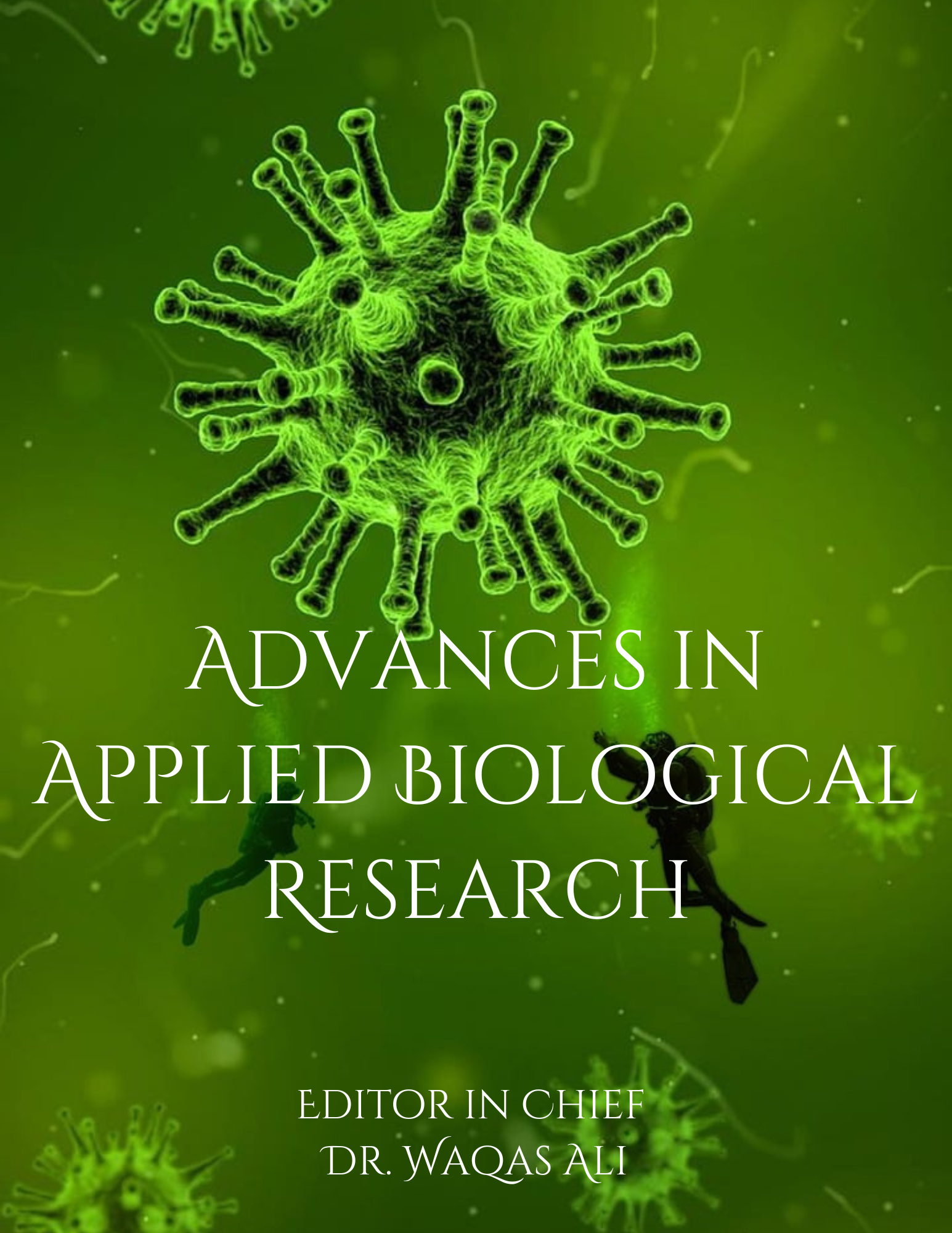Study on Biomedical activity of stem and leaf extraction of Heliotropium marifolium (J. Kocnig ex Retz.)
DOI:
https://doi.org/10.48165/aabr.2025.2.1.06Keywords:
Amylase, Hyperglycemia, Herbal medicine, Inflammation, DPPHAbstract
New anti-diabetic compounds can be obtained from Indian herbal remedies, which are employed in the ancient Ayurvedic approach to manage hyperglycemia. A common medicinal plant, H. marifolium is a significant reservoir of compounds with potent antioxidant action. The main objective of the study was to find out the anti-inflammatory activities, antioxidant and antidiabetic effect of selected medicinal plant. Conventional parameters such as DPPH, ABTS, hydroxyl, superoxide radical, nitric oxide, and hydrogenperoxide assay were performed. The chromogenic iodine technique was used to quantitatively determine the activity of extracts in relation to amylase inactivation. At 250µg, the leaves extraction had a much stronger scavenge action (>75%) than the stem extraction (<75%). Both samples exhibited dose-related enhancements in antioxidant activity. When compared to its standard a low scavenging activity at 50µg concentration and comparable scavenging activity at 300µg was recorded among extract. One of the well-established roots of inflammation, protein denaturation, was successfully controlled by the use of the extract. Both extracts were discovered to have a non steroidal anti-inflammatory activity. Additionally antidiabetic study shows that the standard inhibitor, acarbose, has an least IC50 value of 122.37 μgml-1, following that the leaf and stem extracts (187.30 μg ml-1 and 209.26 μg ml-1, respectively). The data confirms that the primary compounds found in stem and leaf extracts may promote the effectiveness of antidiabetic, anti-inflammatory, and antioxidant nature of the plant.
References
Aboelmagd, M., Elokely, K., Zaki, M. A., Said, A., Haggag, E. G., & Ros, S. A. (2018). Anti-inflammatory of pyrrolizidine alkaloids from Heliotropium digynum. Medicinal Chemistry Research, 27(4), 1066–1073. https://doi.org/10.1007/s00044-018-2137-3
Betanabhatla, K. S., Jasmin Sajni, R., Raamamurthy, J., Christina, A. J., & Sasikumar, S. (2007). Anti-inflammatory and antinociceptive activities of Heliotropium indicum Linn. in experimental animal models. Pharmacology, 3, 438.
Chunthorng-Orn, J., Dechayont, B., Phuaklee, P., Prajuabjinda, O., Juckmeta, T., & Itharat, A. (2016). Cytotoxic, anti-inflammatory and antioxidant activities of Heliotropium indicum extracts. Journal of the Medical Association of Thailand, 99(Suppl. 4), S102–S109.
Dash, K. G., & Abdullah, S. M. (2013). A review on Heliotropium indicum L. (Boraginaceae). International Journal of Pharmaceutical Sciences and Research, 4(4), 1253–1258.
Kandemir, N., Çelik, A., Shah, S. N., & Razzaq, A. (2020). Comparative micro-anatomical investigation of genus Heliotropium. Agricultural Biotechnology, 15, 113–118.
Paula Sales, P., Das Dores Alves de Oliveira, M., Figueiredo Watanabe, J. M., da Silva Barbosa, A. P., da Mata, B. C. A., de Jesus e Silva Viana, M., & de Almeida, P. M. (2023). Phytochemical characterization, isolation, antioxidant and cytogenotoxic activity of leaves of Heliotropium elongatum (Lehm) I. M. Johnst. Journal of Toxicology and Environmental Health, Part A, 86(23), 871–897. https://doi.org/10.1080/15287394.2023.2254536
Roy, A. (2015). Pharmacological activities of Indian heliotrope (Heliotropium indicum L.): A review. Journal of Pharmacognosy and Phytochemistry, 4(3), 101–104.
Shah, S. M., Hussain, S., Khan, A. U., Shah, A. H., Khan, H., & Barkatullah, U. F. (2012). Cytotoxic and phytotoxic actions of Heliotropium strigosum. Toxicology and Industrial Health, 31(6), 1–4. https://doi.org/10.1177/0748233712457445
Srinivas, K., Rao, M. E., & Rao, S. S. (2000). Anti-inflammatory activity of Heliotropium indicum Linn. and Leucas aspera Spreng. in albino rats. Indian Journal of Pharmacology, 32(1), 37–38.
Syed Akbar, W. A., Mary Shamya Arokiarajan, J., John Christopher, N., Zaheer Ahmed, & Rampratap Meena. (2023). Evaluation of bioactive compounds as antimicrobial and antidiabetic agent from the crude extract of Heliotropium curassavicum L. Biocatalysis and Agricultural Biotechnology, 50, 102745. https://doi.org/10.1016/j.bcab.2023.102745
Watanabe, T., Rajbhandari, K. R., Malla, K. J., & Yahara, S. (2005). A handbook of medicinal plants of Nepal (Vol. 15). Bangkok, Thailand: Kobfai Publishing Project.
Williams, L. A., O’Connor, A., Latore, L., Dennis, O., Ringer, S., & Whittaker, J. A. (2008). The in vitro anti-denaturation effects induced by natural products and non-steroidal compounds in heat-treated (immunogenic) bovine serum albumin is proposed as a screening assay for the detection of anti-inflammatory compounds, without the use of animals, in the early stages of the drug discovery process. West Indian Medical Journal, 57(4), 327–331.

